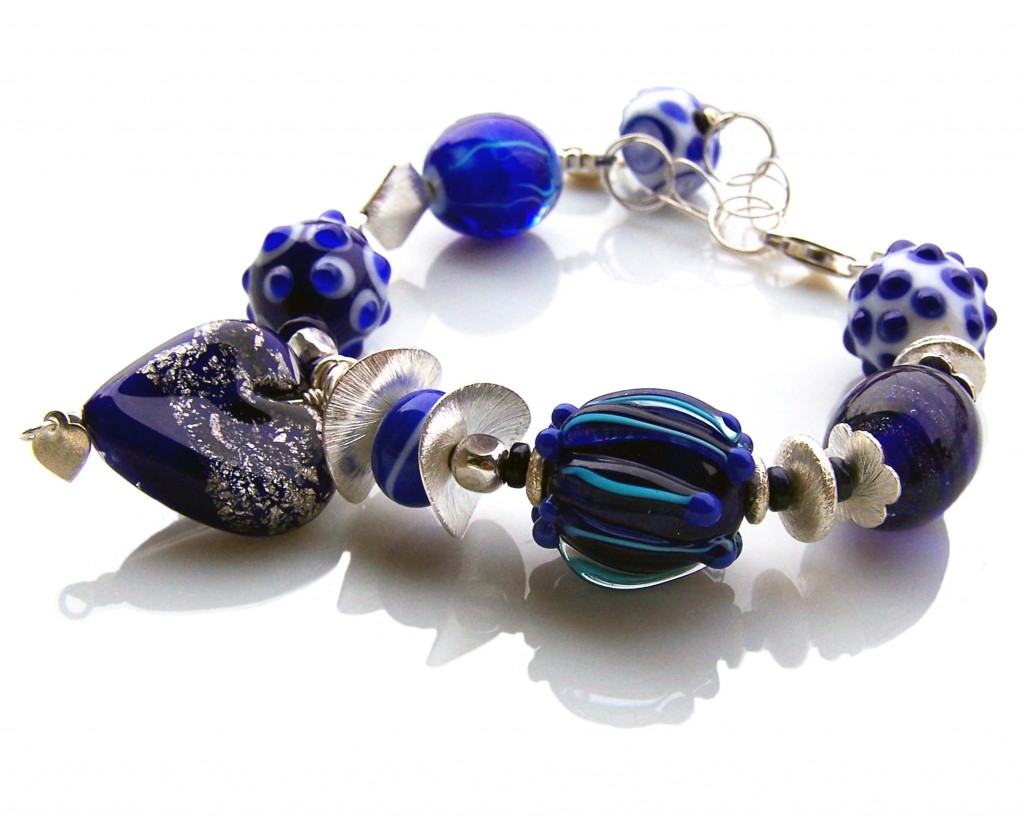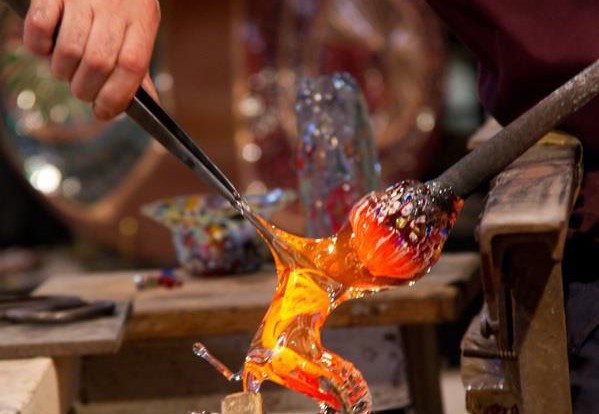Always the production of artistic glass is for the city of Venice an important economic reality. The oldest document available today on the art of glass dates back to 982, and it is an act of donation: according to the date of this writing, in 1982 were officially celebrated the thousand years of Venetian glass. Many documents testify to the concentration of the furnaces along the Rio dei Vetrai in Murano, where even today there are the oldest laboratories. Starting from 1450, thanks to the intuition and talent of Angelo Barovier, glazier of an ancient family of Murano, there is an evolution of the manufacturing techniques, which will develop exceptionally next two centuries, leading to the creation of glass of high and incomparable purity.

In the sixteenth century, the Murano glass saw its highest splendor: refined techniques and developedmaterials through the experiences of the fifteenth century, glassmakers were dedicated to the study and improvement of the forms of artifacts. The blown became thin and very pure, the styles increasingly essential and read, suitable embellish the tables of the rich Europeans. Started also a form of industrial espionage between the furnaces, intending to steal the secrets of the best Murano glassmakers. The Republic established awards for artistic masters who introduced innovations in glass processing, protecting important artistic innovations of the time, such as the invention of the filigrees. The privileges assigned had a time duration, the maturity of which the processing techniques could be used by all the glassworks. The authorities also sought to limit the emigration of teachers and export of technology: in 1605 he came up the Golden Book, containing the names of members of the Magnificent Community of Murano, by then known as the nobility glassmaking island. In the twentieth century Murano masters were able to follow the development of contemporary artistic movements, devoting both elegant craftsmanship both trials own art, respecting the old tradition that makes the Murano glass a unique, prestigious and inimitable.
What is Glass
The glass is a product derived from silica and is considered a high viscosity liquid and not a solid, as it does not have a regular internal crystalline structure.
The glass is prepared by fusing mixtures of silica, such as quartz and sand, and metallic carbonates (sodium, potassium, calcium, lead). It’s formed by the reaction of metal silicates, which constitute the glass. Among its varieties, there are: the common glass, crystal colorless, the glass for thermometers, glass quartz etc. To obtain the colored glass are added small quantities of metal oxides: iron for the green, cobalt for blue, colloidal gold or copper for the red, tin for glasses milky. Fusion occurs in aluminum crucibles very heat resistant, heated in electric or gas furnaces.
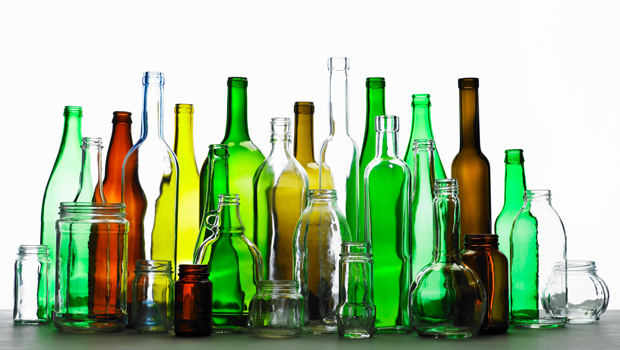
The workmanship
Venetian glass is sodium, as in the ancient Mediterranean tradition. It means that the silica, which is destined to become a glass by melting, adding soda to allow the fusion at lower temperatures. Potash, alternative to soda, typical of the Nordic countries, generates a gleaming glass suitable for grinding and incision (as the English lead crystal), but not to the complex hot work, typically Venetian. The mixing of raw materials takes place in the evening, at the end of working hours, and the preparation of the material lasts all night: the two basic raw materials are added stabilizer (as calcium carbonate), the bleaches or the colorants, and possibly the matting. The reverberatory furnace melts the raw materials at a temperature of about 1.400° and the glass in the morning are molten material, ready for modeling. The glass paste remains ductile at temperatures up to 500°. The working group consists of the “square”, composed of servants and laborers, which is coordinated by the master. The work can be, then, cold-finished by expert grinders that proceed to sanding or other finishes; the incision is performed in independent laboratories figurative, where there are highly skilled decorators. If the decoration planned is the enamel, the object passes in a specific laboratory in which are performed painting and annealing of the enamel.
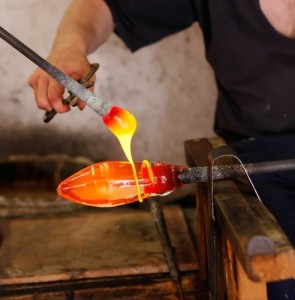
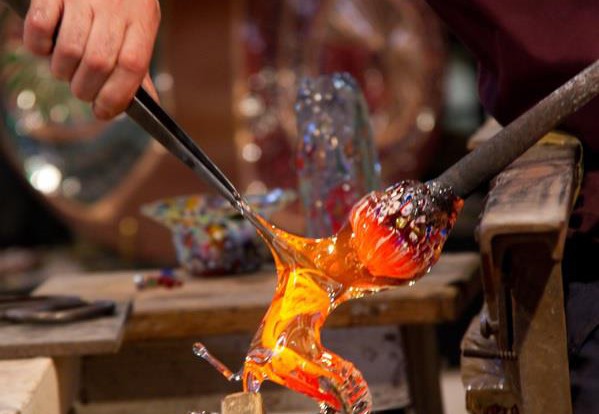
The process
Glassblowing is the art of creating sculptures manipulating molten glass. It dates back to 300 A.C. and originated in the Middle East. Since then, the products of blown glass have become indispensable in daily life as in scientific innovation and this has become one of the major art forms. There are two types of blowing of the glass: Pearls to light, made with a blowtorch and the footprint, which provides for the use of a cane.
Method 1: Footprint
- Collect the liquid glass. With a long steel pipe or tube, pick up the glass from the furnace (the furnace where you keep the glass melted). The temperature of the glass inside the furnace should be around 1370 °. Think to the turning of a apple into the caramel. Think of the torch as the apple and the furnace like the pot of caramel. Just as the apple turns slowly, collect the glass requires a continuous rotation of the torch in the furnace, ensuring uniformity and smooth.
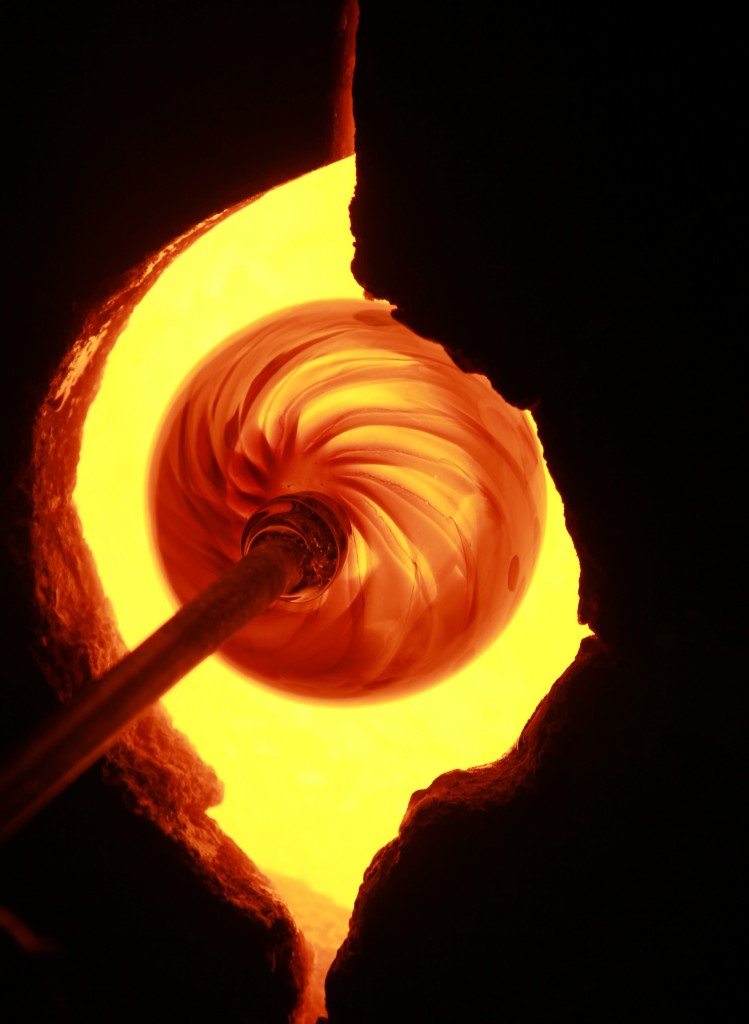
- Use a Marver table. Once the glass is stable, move on a steel table called Marver, and begins to shape it. Start by rolling it on the table. It is important to ensure that your cylinder is symmetrical. Once you’ve gotten this form, continues to rotate the torch to prevent the glass slides.
- Marver table will absorb most of the heat of the molten glass because the surface of the material is in contact while rotating.
- If the sides of the glass becomes too thin, cool them rotating one by one.
- If the bottom instead is too thick, put the glass back into the heating furnace (the one that is used to heat to keep the glass malleable) and concentrate the heat on the bottom. Run constantly the glass while warm it. Clog up. Blow in the tube then cover with your thumb. The trapped air will expand through the hot pipe forming a bubble. This first form of glass is called ‘parison’.
- Once you have a uniform bubble, you can return to the Marver table or collect more glass. Remember to always rotate while you move from the table to the furnace. Add. Collect other glass around the bubble. The number of collections you do depends on how big the piece that you want.
- If you want a little more color, is a good time to add it in the cold pole. Give a shape of a bullet. When you have finished accumulating, dampen a newspaper and helped with this transform the parison in a bullet. Then heat it in the oven. Remember to continue always turn the torch!
- Define your form. Rotate the glass on the table Marver, while a helper blows air through the tube into the glass.
- If you want the bubble will “move”, supports the glass on the table Marver side and not on the bottom. With sides colder, the bubble will move to the bottom when puff.
- If you want the bubble disappears from the glass so that the sides expand, support the glass on the table Marver with the fund and not with the sides. Cooling the bottom, the bubble will expand sides when puffs. Cutting. Once your piece of glass is formed, you can cut it by creating lines in the neck, with big pliers. The neck should be equal to or smaller than the diameter of the torch. Of course continues to rotate! Open the glass and finish the job. You will need to transfer the glass on another tool called pontello. This is one of the more complicated steps in blowing. A secret makes it easier. Find something small (eg a lime) and put it in the water. Engrave carefully a line around the neck. This weakens the glass and it cracks. It will be easy to separate it from the torch and now cuts the margin. Heat the glass in the heating furnace and cut the board with the shears.
Cools. Place the thumb on the photo in which puffs then dip the glass in a bucket of water, while continuing to keep plugged to prevent water from clogging the barrel ruining the work. Remove your work from the tube. Use a wooden spatula and beat on the tube, the glass should break away from the bottom. To cool completely, temperalo. Take it carefully in temperer (an oven which cools at a controlled temperature) and lasciacelo all night.
Method 2: Pearls to light
Use it for small items. This process of manipulation of the glass melted on a small shape torch is used to create smal pearls or other small things such as a paperweight. This part refers to the creation of a little pearl. Light the flame. You can use oxygen and propane if you have them. Slowly warms the spindle with a blowtorch. Try to find a mandrel of stainless steel with a ceramic cover. The cover will prevent the melted glass will stick to the spindle when you want to take it off. Flit glass on the tip of the fire to put on it. If you don’t make in this way, instead of melting could suffer a kind of shock and crumble. Hold it for about 30 seconds. Start from holding the glass close to the heart of the flame. Hold it until it develops a beautiful orange ball.
- Continue to rotate the glass so that it maintains the rounded shape. Stick Tip molten glass to the spindle.
- Place the glass on the spindle and start to turn it away from the body. Perform this movement until you’ve covered the entire surface of the mandrel.
- Use a blowtorch to separate the glass rod from the spindle. It is easier to cut away the glass even when the spindle is warm. Enter the spindle with the glass bubble in the flame, turning to prevent the glass from slipping off.
- If you want, add a color to the bubble. You can do it, this technique is not for beginners because it requires agility and the simultaneous use of the hands. Remove the mandrel from the flame and give the shape if necessary with a spatula graphite. Use the spatula to:
• Delimit the edges
• Create square
• Try to even the edges of the curve.
The mandrel has to cool down a bit before being moved to the temperer, turning.
OBJECTS MADE WITH MURANO GLASS
Chandeliers
From the Middle Ages to the early eighteenth century the “cesendello” was the most tasteful lighting in homes and churches: a container was elongated, generally hanging, filled with water and a top layer of oil with a wick. One important change, dating from the eighteenth century, is the birth of the “ciocca”, the crystal chandelier with blown glass elements and decorated with flowers and multicolored glazed pending elements: this chandelier is part of today’s production of Murano.
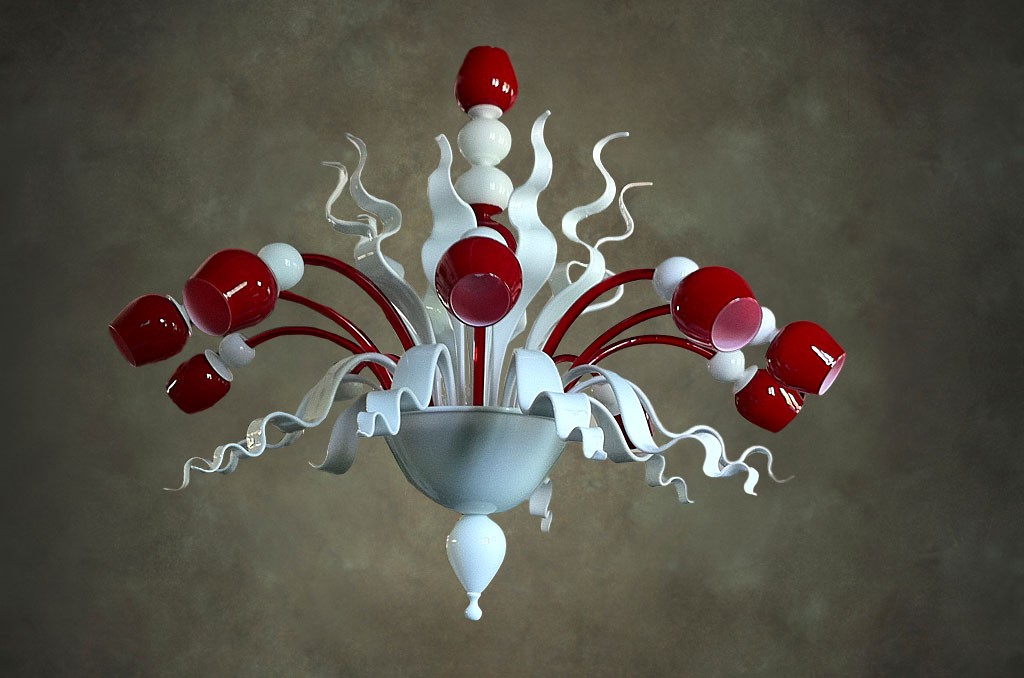 Murrina
Murrina
To form a simple murrina with concentric overlapping layers it is necessary that in the furnace there are crucibles glass with the state of the springs of different colors. A worker then picks up the tip of a rod of iron a small amount of glass from the first crucible, immediately after passing to cover it with other glass taken from a second crucible. He may do so by overlapping several layers of different colors. The combination of these layers of glass will be to form a cylinder of the weight of five, six kilograms. Once made regular by rolling it on a thick iron plate or bronze, is applied to the free part of a second rod of iron. Everything then passes into the hands of two other workers, that will stretch to take it to the mash DIAMETER decided. In this case you will get a murrine with drawings of concentric circles. If, however, in some stages of processing the mash soft glass will be stuck in a mold with the vertical ribs shaped flower, star, heart, you will get a murrina with floral design, star or heart. Chopsticks thus obtained are used to produce pearls “mosaic” (or “millefiori”), plates and bowls and finally pendants. To make the beads should cover the thin layer of molten glass wrapped around the iron rod with many slices of these rods and compacts with simple tools while giving the desired shape.
 Sculpture
Sculpture
The technical difficulties related to the modeling of heavy masses of molten glass have been addressed since the thirties of the last century. Today, the current artistic sculptural they belong to some of the most respected masters of Murano occupies a vital position in the production of Murano.
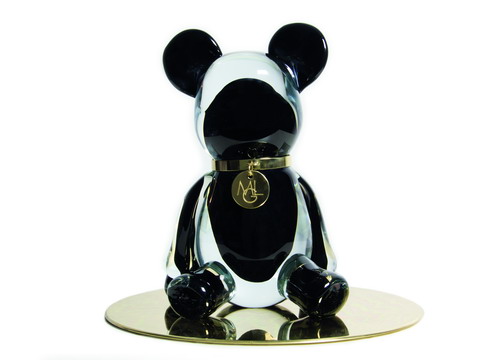 Glassware
Glassware
Since the Middle Ages tableware is a typical product of Murano glass. Currently the most famous designers collaborate with glassware for the realization of contemporary models.
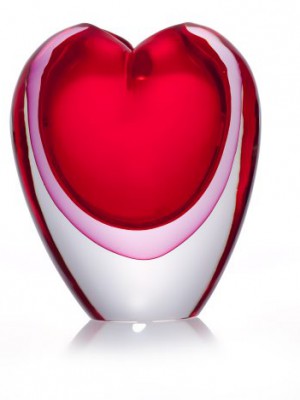 Mirrors and pictures
Mirrors and pictures
In centuries past the glassy slabs produced in Murano were manually processed in the workshops of the Venetian mirror makers. The tradition has been preserved, and experienced craftsmen mirror apply the finest decorative techniques to match the quality of ancient artifacts.
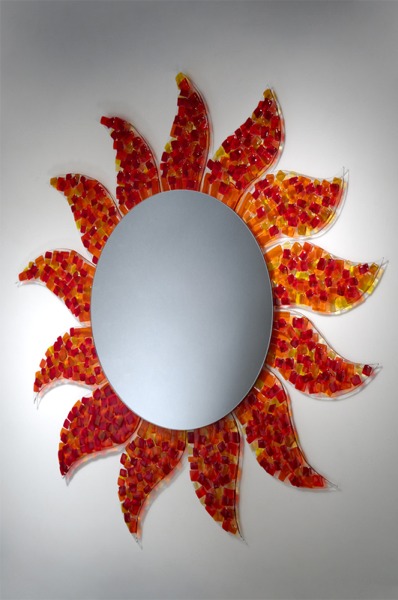
Decorations
It is an ornamental painting performed with a material formed with the same components of the glass wall on which it is applied. Descendants of the Islamic and Byzantine art enamel developed in Engraving.
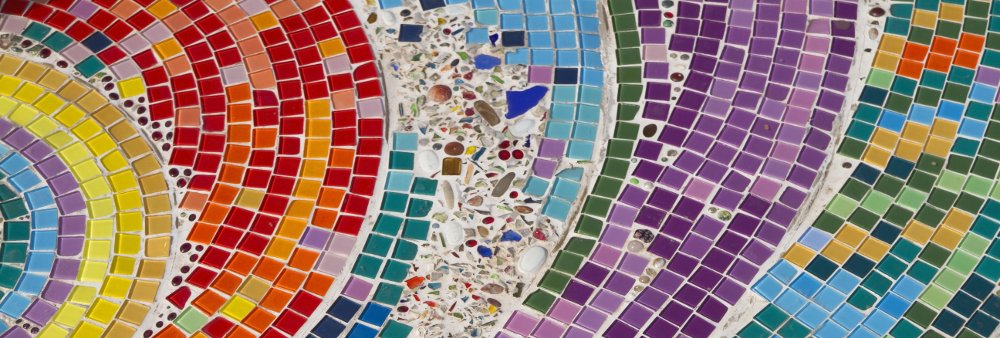
Engraving
It is preferably applied on the crystal colorless or slightly colored with two modes: graffiti to spearhead and Wheel engraving (the latter made with a small metal wheel and deeper).
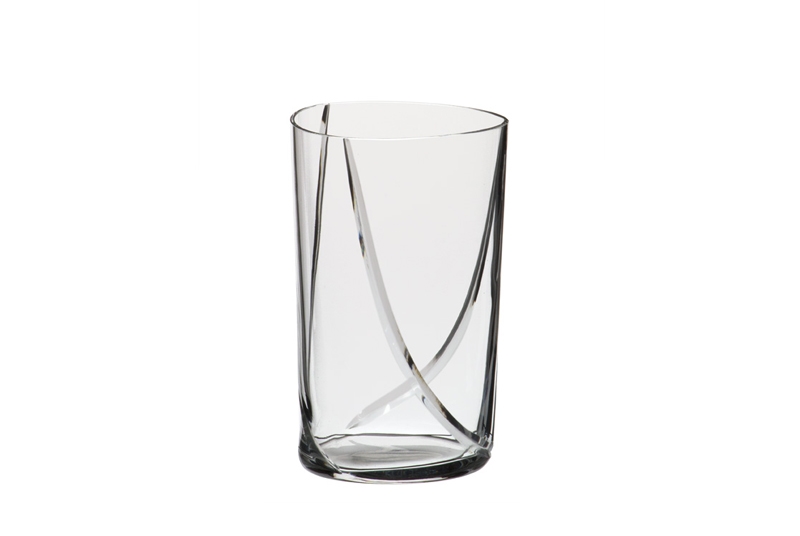 Glass pearls
Glass pearls
The simplest are the “little pearls”: pearls rounded or sharp edges, obtained by sectioning perforated tubes pulled in the furnace for a distance of tens of meters. The manual is exalted in the so-called processing to “light”: a non-drilled glass rod is softened by the heat of the fire escaping from a torch, is then wrapped around a metal tube, so as to give the desired shape to the pearl and finally decorated with polychrome glass.
